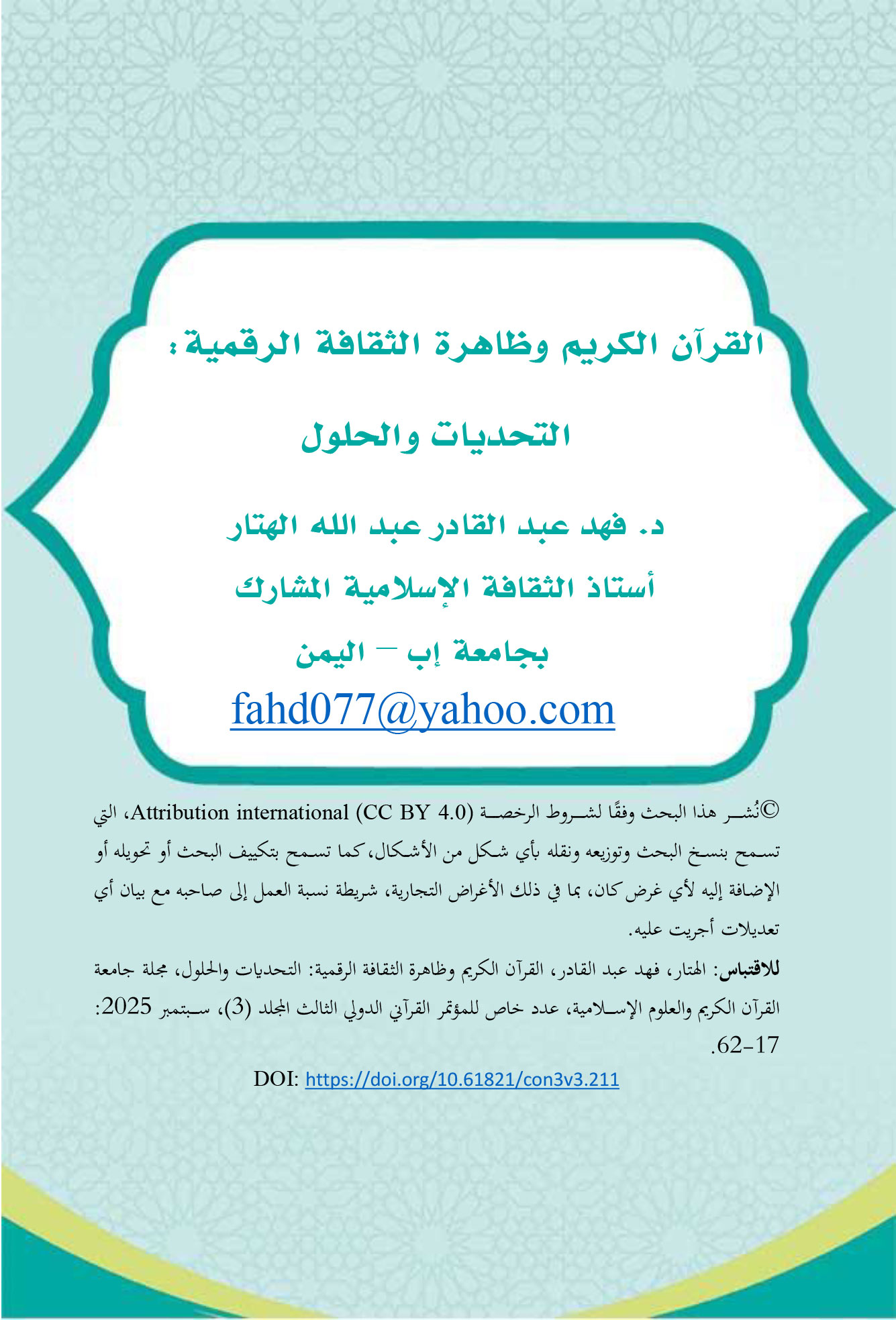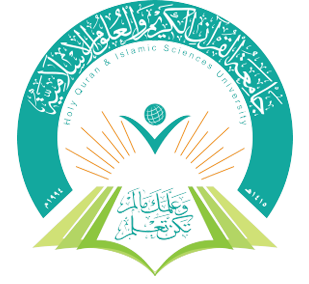The Holy Qur’an and the Phenomenon of Digital Culture: Challenges and Solutions
DOI:
https://doi.org/10.61821/con3v3.211Keywords:
Culture, Quran, Digital, Applications, Challenges, OpportunitiesAbstract
This research aims to study the impact of digital culture on the Quran and to identify the challenges that arise in understanding and interpreting Quranic texts in light of modern digital technologies. The researcher relied on the descriptive-analytical approach, addressing the concept of digital culture and its development, exploring the opportunities it offers in serving the Quran, as well as the challenges that may emerge from its use. The study is divided into an introduction, three sections, and a conclusion. The first section is dedicated to explaining the concept of digital culture and its characteristics, while the second section focuses on the opportunities that digital culture offers for serving the Quran, such as electronic applications and digital educational platforms. The third section addresses the challenges facing the Quran in the digital age, with proposed possible solutions.
The research concluded with a set of findings, the most notable of which are: digital culture provides significant opportunities to serve the Quran, such as making it accessible through applications and websites, and utilizing modern technologies like artificial intelligence and virtual reality in Quran education. However, many challenges arise, including technical, social, and cultural issues, with the most critical being those related to the content of the Quran in its interpretation, teaching, and deriving legal rulings. The research suggested several solutions to these challenges, including providing a reliable scientific reference for Quranic digital content, adopting digital education, and enhancing Islamic cultural identity.
Downloads

Downloads
Published
Issue
Section
License
Copyright (c) 2025 Journal of the University of Holy Quran and Islamic Sciences

This work is licensed under a Creative Commons Attribution 4.0 International License.
©This article is an open access article distributed under the terms and conditions of the Creative Commons Attribution (CC BY) license












